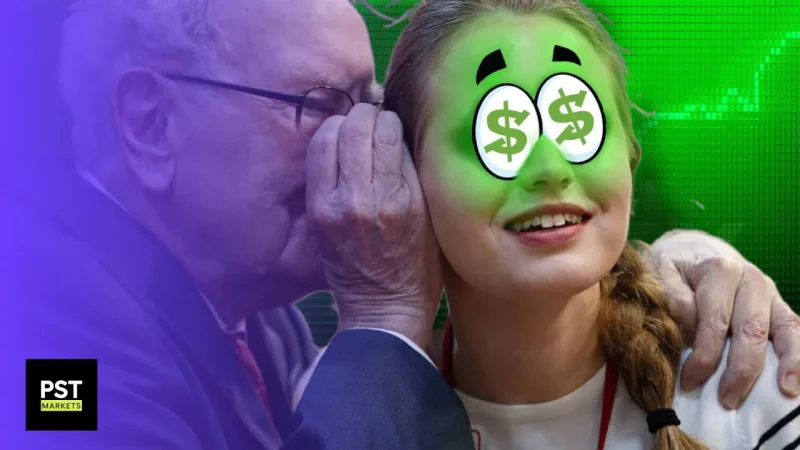When it comes to investing like the rich and wealthy, a quick search on the internet will walk you through the traditional ways of investing, such as buying real estate, stocks, and treasury bills. Even though these investment ideas can be very good for most people, they have already been covered extensively. But what about the more exotic and under-covered investment ideas that millionaires and billionaires love? Here are five investment ideas millionaires use to retain and build their wealth, and how you can use them too.
Private Equity
Investment strategies vary among rich people and the stock market is a staple in every wealthy person’s portfolio; but where they make most of their money is by investing in private equity.
Peter Thiel made his billions investing in Facebook, not the stock market. Paul Graham did the same things by investing in Reddit. But private equity is not available to everyone – especially if you don’t have millions to spare and are not an accredited investor.
This is where equity crowdfunding platforms come in. These platforms let you invest in companies that are still private for as little as $100. Companies like Wefunder, StartEngine, CircleUp, EquityNet, and many others can help investors get in on private startups like Mercury Bank which is raising funds for their Series B. In 2022, Mercury used Wefunder to raise $5 million and recorded $15 million in revenue that year, achieving a 150% growth rate YoY.
The pros here seem obvious. After all, getting exposure to prominent and promising start-ups could be very lucrative. Especially if you pick the next Facebook or Uber which could net you a thousands of times return on your investment once they IPO. But there are risks to this as well.
Not all startups are the next unicorn. In fact, most startups fail which makes investing in them a significant gamble. Angel investors and private equity funds are able to invest in hundreds of companies so that the one or two that really succeed can cover all the other’s losses. But for most people, this is not an option.
One way to mitigate this risk is by spreading your investments across several startups, and investing in small increments. However this won’t make up for the time cost this investment idea comes with. Finding the next hidden gem is as far as it gets from passive investment. Doing due diligence on private companies presents even more challenges than researching public companies.
Real Estate Crowdfunding
The virtues of using real estate as an investment is nothing new since even millionaires keep 35% to 50% of their wealth in real estate. But a less well-known investment idea is real-estate crowdfunding which helps you invest in real estate without buying an entire home.
Just like equity crowdfunding, real estate crowdfunding allows you to become a shareholder in a property and receive returns from the sale of the property based on the amount you invest. If the property is used as a rental, then investors will gain a passive income stream too which they can use to invest in other private equity for example.
The pros of real estate crowdfunding are similar to those of equity crowdfunding – you don’t need a lot of money. In fact, many real estate crowdfunding platforms, such as RealtyMogul, Yieldstreet, and Fundraise offer a minimum investment of $1,000 to $5,000.
RealtyMogul is open to both accredited and non-accredited investors but requires a minimum investment of $5,000 for two types of REITs. One is an income REIT focused on providing monthly income to investors through contractually obligated interest payments. The second is a growth REIT which provides quarterly income, in addition to focusing on long-term capital appreciation.
The income REIT offers an annualized cash distribution between 6% and 8%, while the growth REIT offers an annualized distribution rate of 4.5%. So far RealtyMogul has distributed $43.3 million to its investors through both REITs combined.
For those new to real estate investment, these real estate crowdfunding options could offer a relatively painless introduction to this type of investment since someone else is managing the project. However there are some significant drawbacks.
This is an illiquid investment since many real estate crowdfunding platforms have terms dictating the period of time – which is often a number of years – investors are required to keep their money in the REIT. In other words, you can’t easily return to a cash position if a better opportunity appears.
Besides this, investors need to spend time and energy ensuring that their real estate investments are diversified geographically. However the largest barrier for those interested in this investment idea is that most real estate crowdfunding platform’s are only open to accredited investors.
Luckily, this next investment idea is available to almost anyone.
Gold ETFs
Gold is not a new investment method, in fact it may be one of the oldest. It is used today to hedge against inflation, deflation, and as a way to diversify your portfolio because it has a low correlation to assets like stocks or real estate. But, for most people, owning physical gold is an obstacle which is why gold ETFs offer a better alternative in most cases. These ETFs hold gold assets, such as bullion or futures contracts, but are cheaper than buying physical gold.
Both wealthy and average investors prefer gold ETFs to physical gold because they are more liquid. However, gold ETFs may not always be able to track the price of gold perfectly which could cause investors to miss out on the full benefit of rising gold prices.
There are a number of gold ETFs to choose from, but the largest by a wide margin is SPDR Gold Shares. Even though it’s not the cheapest option due to its annual expenses of 0.4% or $40 for every $10,000 invested, it is the most established gold ETF with an average of 10 million shares traded daily. Another option is the smaller SPDR Gold MiniShares Trust, which offers lower annual expenses of 0.1%.
Blue-Chip Art
Collecting art has long been the past time of the rich and wealthy. At first glance it might just seem like a very expensive hobby, but its actually one of the smartest ways the wealthy preserve their fortunes.
But the highest level of art collection is collecting “blue-chip art” which – much like blue chip stocks – refers to art that is very valuable because of the artists who created them or their history. For example, one of the best examples of blue-chip art is the sale of Paul Cézanne’s La Montagne Sainte-Victoire (1888-1890) in 2022. This painting was acquired in 2001 for $38.5 million and resold 21 years later for $137.8 million.
One reason why the art market is so strong is because it has an established base of collectors that are rarely affected by global conditions. In fact the art market was one of the few markets not affected by the 2008 financial crisis or pandemic.
However you don’t need to be a collector with millions to spend to profit from this investment idea. In fact, you can invest in blue-chip art by using art investment platforms like Masterworks and ARTBnk.
These platforms allow investors to own a fraction of a Picasso painting for as little as $20. Once the painting or other art piece is sold, profits are distributed to investors according to the amount invested.
But like with any investment, you need to do your own due diligence. The art market can be volatile at times because so much of it depends on art appraisers reappraising the value of a piece at higher and higher prices. In some cases it may even be worthwhile to seek help from a professional to make sure you are selecting the best piece to invest in.
It’s also important to note before you make the decision to invest in fine art that it is taxed as a collectible, meaning that it is subject to a long-term capital gains tax rate of 28%. That’s higher than the long-term capital gains tax rate on conventional investment assets, which is as much as 20% for the wealthiest Americans.
Collectibles
Collectibles provide great investment ideas, since they can be defined as anything that has the potential to increase in value over time. Everything from old books and coins to toys, vintage cars, sneakers, and investment-grade wines can be defined as a collectible.
Some investors prefer collectibles because they offer the opportunity to combine their hobbies or interests with investing. Having a tangible, rare asset also gives a sense of security that is often missing when investing in stocks, but that doesn’t mean that collectibles are without risk.
Investment ideas that involve physical assets automatically come with high maintenance costs. After all, buying an expensive baseball card or vehicle only to let it lose value by falling into disrepair is pointless. Therefore, investors will always need to factor in costs related to maintenence and security when considering this investment idea.
Besides this, investors could be duped into buying an inauthentic product. This is a significant risk that requires investors to do extensive research or employ the assistance of an expert to ensure that they are buying the real deal.
Another downside associated with collectibles is the fact that they are illiquid investments. Unlike other investment ideas, you can’t sell them immediately whenever you need money. But if you’ve chosen your collectible wisely there should always be demand for your piece – although it may not be at your asking price.
Depending on your goals, collectibles could be an investment idea worth pursuing – particularly if you want to pass something down to your children and grandchildren. Having a piece of family history that appreciates in value with each generation is often what attracts investors to collectibles more than other investment ideas.
For those willing to seek out new opportunities in the world of collectibles this could be especially fruitful. For example, people who took advantage of the collectible sneaker trend early on were able to profit as the global sneaker market reached $79 billion in 2020. Spotting new, emerging collectibles markets can put you on the fast track to profit as they rise to greater signficance.
Otherwise, investors can look for opportunities in limited edition coins or even coins minted with errors. Unique oddities like “error coins” can lead to significant returns in the future like the so-called “Wounded Eagle” Sacagawea Dollar which was minted in 2000. A mistake in the minting process led to a fault that cuts across the eagle’s belly and it has since become a collectible. In 2023, it sold for $699.95 on eBay though mint state versions can be worth around $5,000.
Other rare but less valuable coins, like the 2009 Kew Gardens 50P coin, offer opportunities for investors able to snatch them up. Released as a limited edition with just 200,000 coins produced, it typically sells for £100 to £150.
The Bottom Line
These five investment ideas highlight the opportunities which exist for investors willing to diversify and explore new investing opportunities whether they are collectibles, gold ETFs, or real estate crowd-funding. While not every investment idea may meet your criteria, if one matches your goals and unique situation, it may be a worthwhile opportunity to explore.
These investment ideas are also a good opportunity to limit your exposure to asset classes that are impacted by the same downtrends. By investing in different options you can try to mitigate the risk that your entire investment portfolio is hit by adverse conditions.
Disclaimer
Please visit and read our disclaimer here.









